Across centuries, the greatest builders have changed how the world is built. Some imagined soaring skylines. Others mastered engineering in ways never seen before. These famous builders shaped cities, advanced construction methods, and left landmarks that still inspire today’s architects and engineers.
In this list, you’ll meet 15 famous builders in history, explore their defining projects, and see how their innovations continue to influence the built environment.
1. Imhotep: The First Recorded Architect
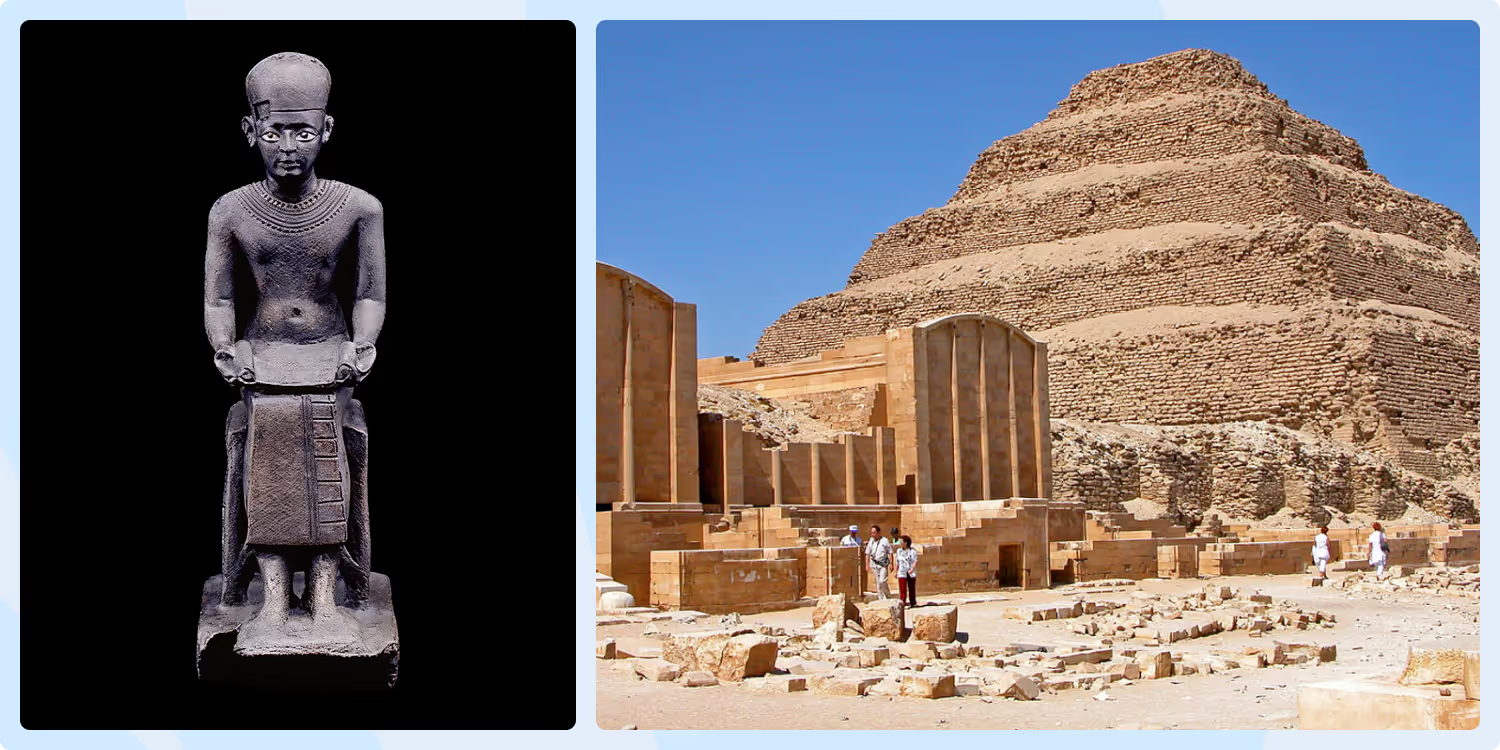
As one of the greatest builders of the ancient world, Imhotep is known as the earliest recorded architect and a pioneer of monumental construction. As chief builder to Pharaoh Djoser, he designed and led the construction of the Step Pyramid at Saqqara, transforming Egyptian tombs into enduring stone monuments.
- Era and Location: c. 27th century BCE, Ancient Egypt
- Most Famous Project(s): Step Pyramid of Djoser, Saqqara
- Notable Innovations: First stepped pyramid design using finely cut stone blocks
- Impact on Construction: Transformed Egyptian tombs into enduring monumental structures
- Legacy: Deified as a god of wisdom and architecture
Imhotep was also a skilled physician, scribe, and high priest. His rare deification reflects the profound and lasting impact of his achievements.
2. Hemiunu: Mastermind Behind the Great Pyramid

Hemiunu is celebrated as the chief architect and engineer of the Great Pyramid of Giza, one of the Seven Wonders of the Ancient World. Serving under Pharaoh Khufu, he led the planning and organization of this colossal project, which remains the largest pyramid ever built in Egypt.
- Era and Location: c. 26th century BCE, Egypt
- Most Famous Project(s): Great Pyramid of Giza
- Notable Innovations: Mastered large-scale stone transport and precise monument alignment
- Impact on Construction: Set enduring engineering standards for pyramid building
- Legacy: Honored with an elaborate tomb near the Great Pyramid
Hemiunu was not only an architect but also a high-ranking royal official and a trusted advisor to Khufu. Archaeological evidence from his tomb suggests he commanded vast resources and labor forces. His name and reputation have endured for over 4,500 years, a testament to the magnitude of his achievement.
3. Sostratus of Cnidus: Architect of the Lighthouse of Alexandria
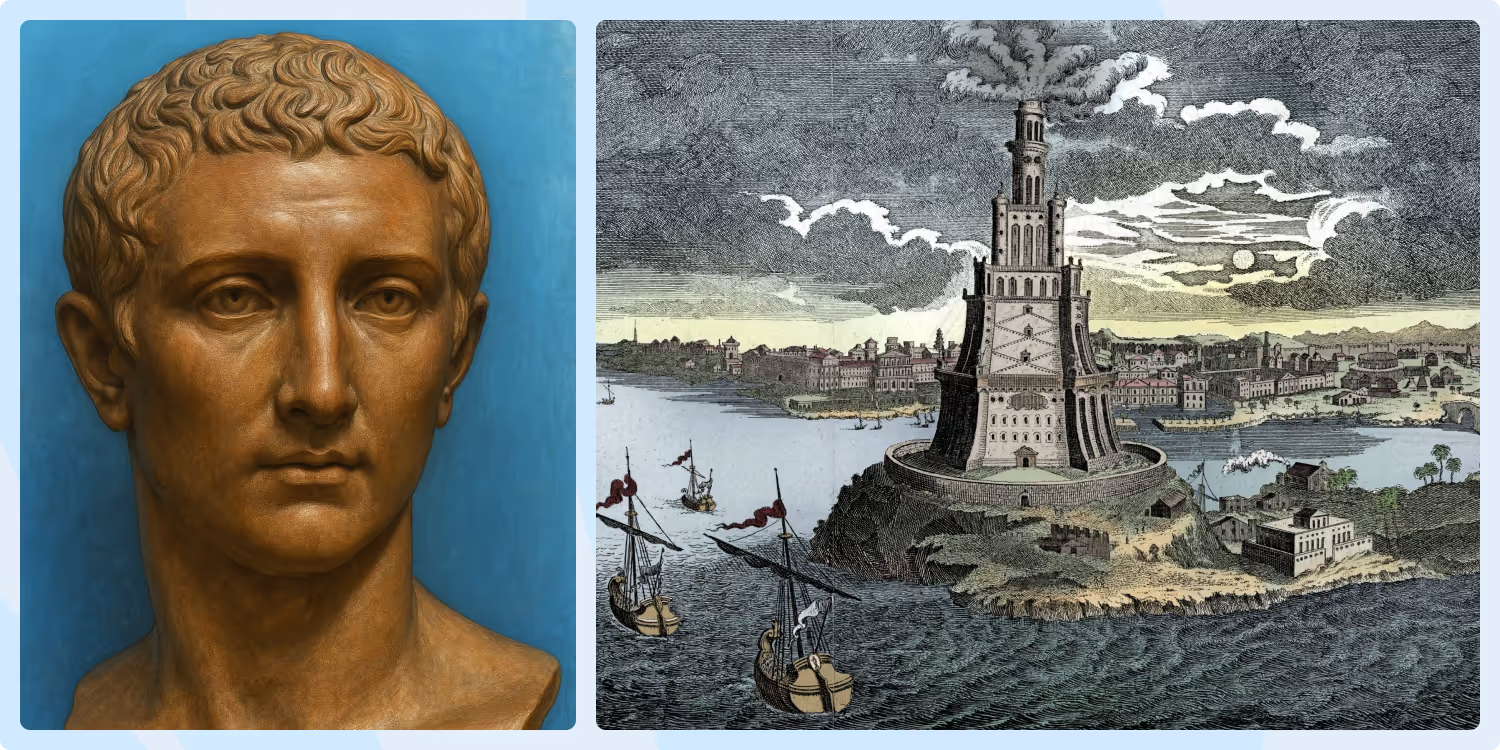
Sostratus of Cnidus is remembered as the visionary behind the Lighthouse of Alexandria, one of the Seven Wonders of the Ancient World. Commissioned by Ptolemy II, he designed a towering structure that guided sailors safely to the busy harbor and stood as a symbol of Hellenistic engineering brilliance.
- Era and Location: c. 3rd century BCE, Alexandria, Egypt
- Most Famous Project(s): Lighthouse of Alexandria
- Notable Innovations: Designed the multi-tiered Lighthouse of Alexandria for maritime navigation
- Impact on Construction: Influenced lighthouse architecture for centuries
- Legacy: Secured personal credit through a hidden inscription on the lighthouse
Sostratus reportedly inscribed his own name on the lighthouse’s dedication in a hidden layer beneath plaster honoring the king. Over time, the plaster wore away, revealing his authorship and ensuring his place in history.
4. Li Bing: Engineer of the Dujiangyan Irrigation System

Li Bing is celebrated as one of ancient China’s greatest engineers. Serving as governor of Shu during the Qin dynasty, he designed and led the construction of the Dujiangyan Irrigation System, a groundbreaking project that controlled flooding and improved agriculture for centuries.
- Era and Location: c. 3rd century BCE, Sichuan, China
- Most Famous Project(s): Dujiangyan Irrigation System
- Notable Innovations: Created the Dujiangyan system, diverting rivers without blocking flow
- Impact on Construction: Proved large-scale flood control could work with natural river flow, inspiring centuries of hydraulic design
- Legacy: Honored as a cultural hero in China
Li Bing’s design still functions today, making it one of the world’s oldest operational waterworks. Local tradition holds annual festivals at his temple to honor his wisdom and service, a tribute that has lasted for over 2,000 years.
5. Apollodorus of Damascus: Master Builder of Imperial Rome

Apollodorus of Damascus is renowned as one of the greatest architects and engineers of ancient Rome. Serving under Emperor Trajan, he designed monumental structures such as Trajan’s Forum and Trajan’s Bridge, blending functionality with grandeur in ways that defined Roman imperial architecture.
- Era and Location: c. 2nd century CE, Roman Empire
- Most Famous Project(s): Trajan’s Forum, Trajan’s Bridge
- Notable Innovations: Engineered massive stone bridges and imperial forums
- Impact on Construction: Expanded Roman public works to record-breaking scale
- Legacy: Remembered for Trajan’s most ambitious public works
Apollodorus was also known for his forthright personality, which sometimes clashed with imperial authority. According to Cassius Dio, he fell out of favor with Emperor Hadrian after criticizing the emperor’s architectural designs, leading to his exile and eventual execution. Despite this dramatic end, his designs remain enduring symbols of Rome’s engineering mastery.
6. Anthemius of Tralles and Isidore of Miletus: Designers of the Hagia Sophia
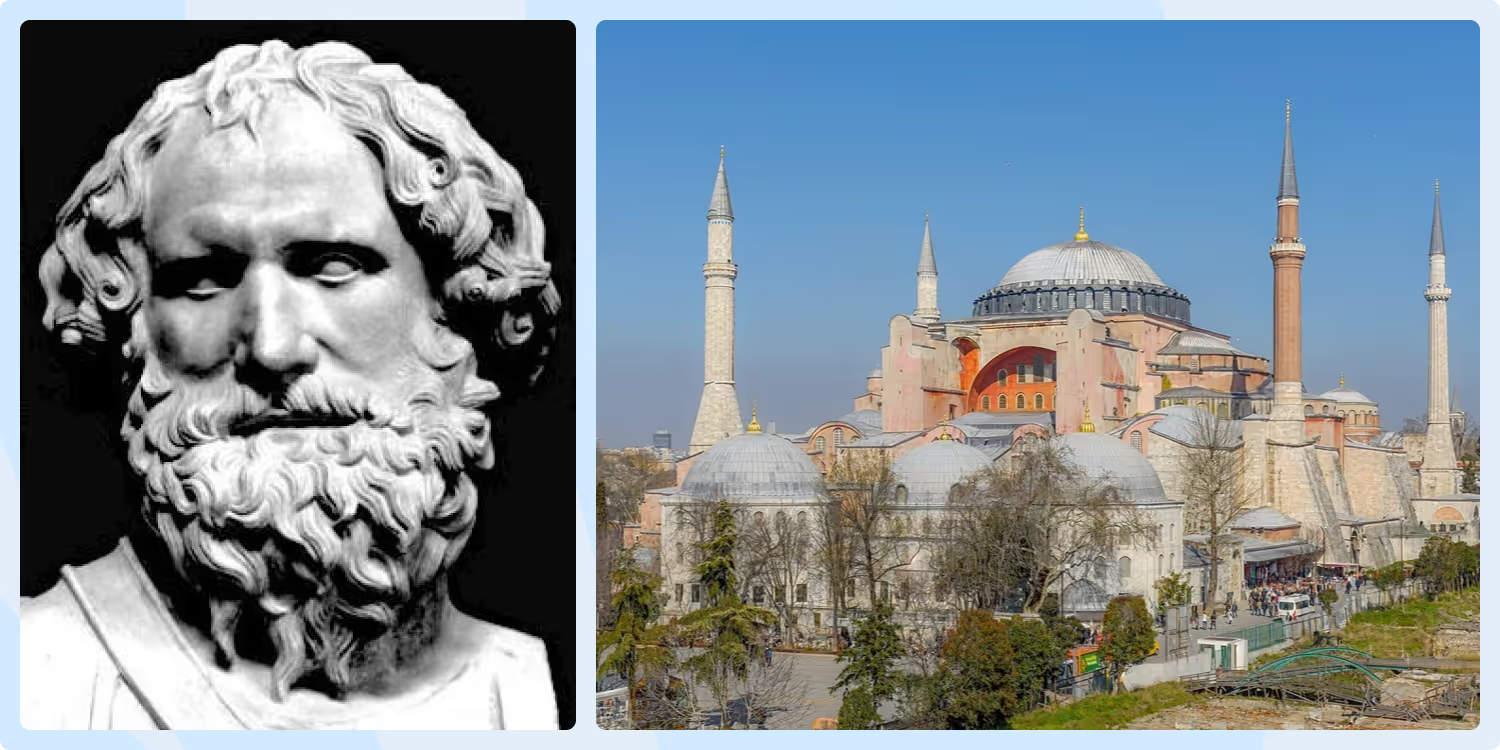
Anthemius of Tralles and Isidore of Miletus are celebrated as the masterminds behind the Hagia Sophia in Constantinople. Commissioned by Emperor Justinian I in the 6th century, they combined mathematics, engineering, and vision to create a vast domed space unlike anything seen before.
- Era and Location: 6th century CE, Constantinople (modern-day Istanbul, Türkiye)
- Most Famous Project(s): Hagia Sophia
- Notable Innovations: Perfected pendentive-supported domes
- Impact on Construction: Influenced church and mosque architecture for centuries
- Legacy: Credited with creating Byzantine architecture’s masterpiece
Contemporary historian Procopius wrote that the Hagia Sophia's great dome appeared “suspended from heaven by a golden chain.” After an earthquake in 558 CE damaged the original structure, Isidore the Younger rebuilt it with a steeper, stronger design.
7. Abbot Suger: Pioneer of Gothic Architecture
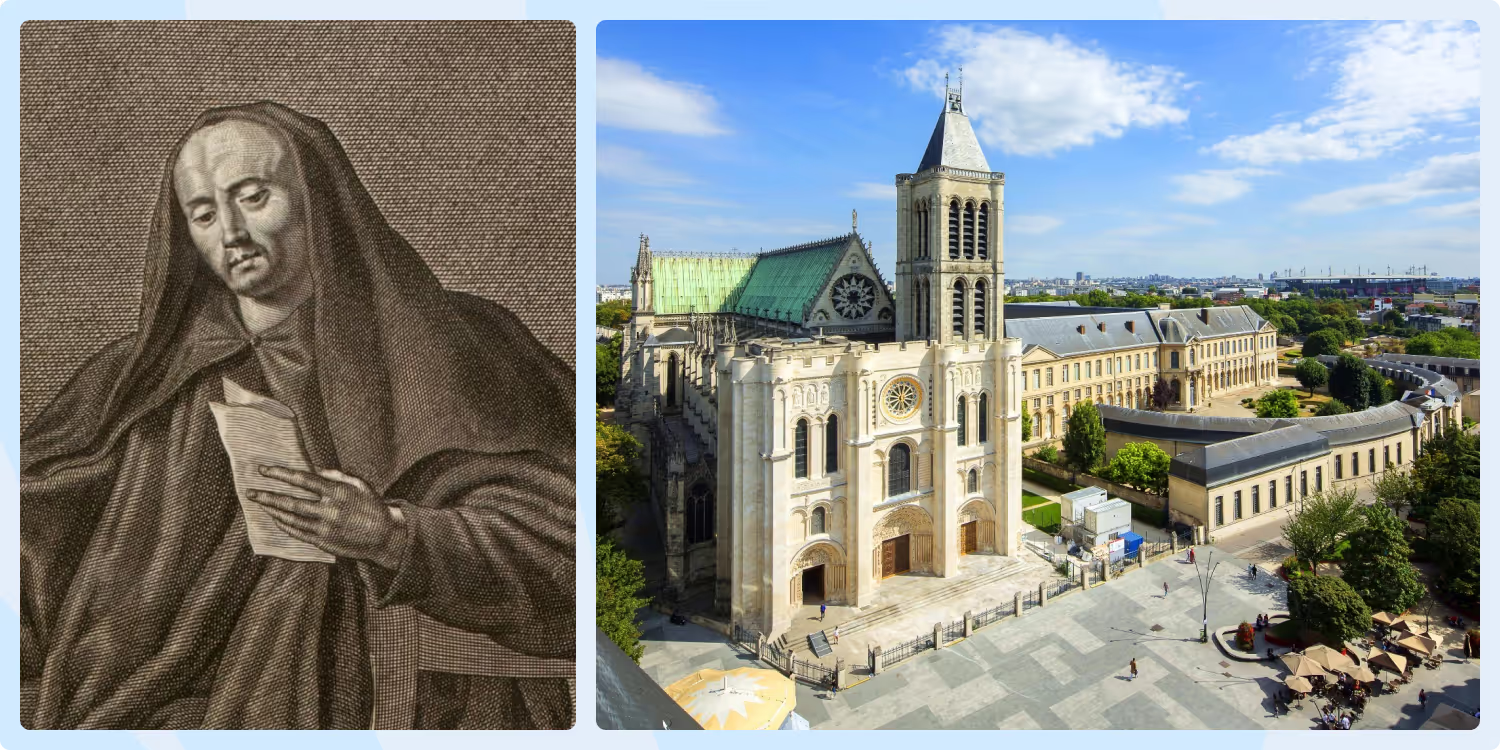
Abbot Suger is remembered as a key figure in the birth of Gothic architecture. As the abbot of Basilica of Saint-Denis, he transformed the abbey church with soaring vaults and pointed arches. He also introduced stained glass that filled the interior with light.
- Era and Location: 12th century CE, France
- Most Famous Project(s): Basilica of Saint-Denis
- Notable Innovations: Combined pointed arches, rib vaults, and expansive stained glass
- Impact on Construction: Sparked the Gothic cathedral movement in Europe
- Legacy: Celebrated as the father of Gothic architecture
Suger believed that beauty and light could bring worshippers closer to the divine, shaping his vision for Saint-Denis. His work inspired many of the great cathedrals that followed, including Notre-Dame de Paris and Chartres. Through his writings, his architectural philosophy spread far beyond France.
8. Li Jie: Author of China’s Classic Building Manual
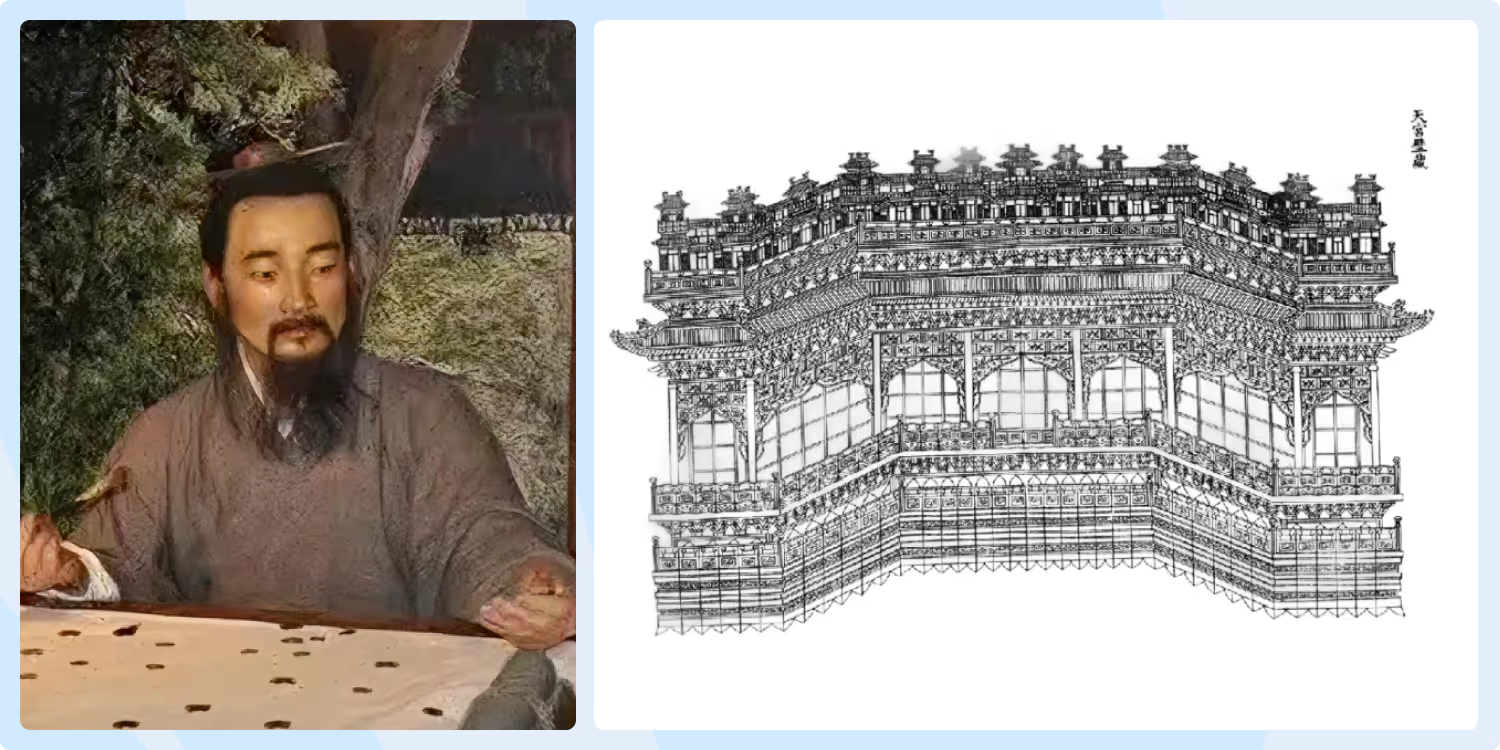
Li Jie is celebrated as one of the most famous builders in Chinese architectural history. Serving as Superintendent of State (Palace) Buildings during the Northern Song dynasty, he compiled the Yingzao Fashi. This comprehensive architectural manual standardized building methods across the empire.
- Era and Location: 11th century CE, Northern Song dynasty, China
- Most Famous Project(s): Yingzao Fashi (Treatise on Architectural Methods)
- Notable Innovations: Standardized imperial building codes in Yingzao Fashi
- Impact on Construction: Unified architectural quality across imperial projects
- Legacy: Regarded as the key figure in establishing Chinese architectural standards
Li Jie’s manual covered everything from carpentry techniques to decorative details, ensuring consistency in public and private buildings. His work preserved traditional methods while improving efficiency, and it remains a key reference for historians studying ancient Chinese architecture.
9. Filippo Brunelleschi: Master of Renaissance Engineering
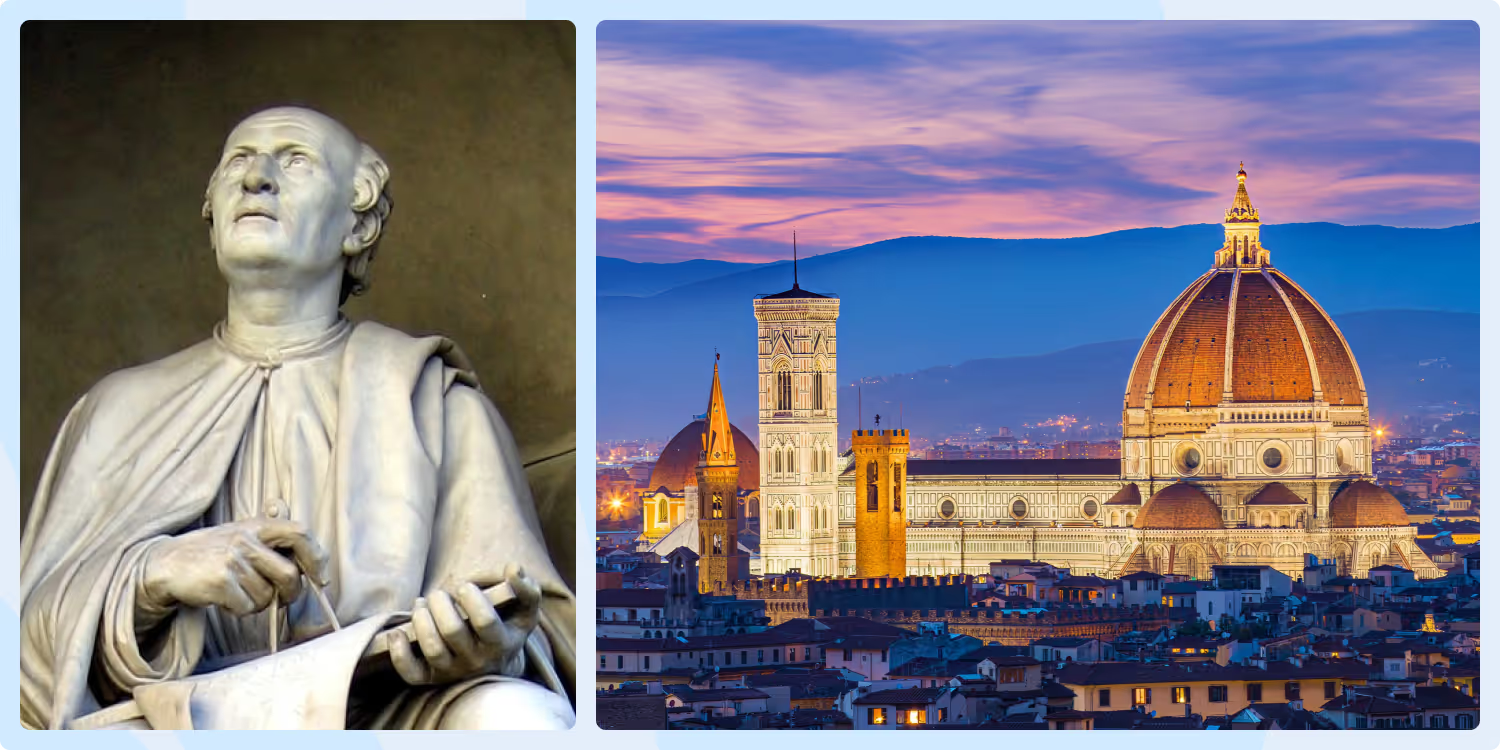
Filippo Brunelleschi is hailed as one of the founding figures of Renaissance architecture. Best known for designing the massive dome of Florence Cathedral, he combined classical inspiration with groundbreaking engineering to solve a challenge that had baffled builders for generations.
- Era and Location: 15th century CE, Florence, Italy
- Most Famous Project(s): Dome of Florence Cathedral (Santa Maria del Fiore)
- Notable Innovations: Designed a double-shell dome without scaffolding
- Impact on Construction: Advanced engineering methods and revived classical architecture
- Legacy: Recognized as a pioneer of Renaissance architecture and engineering
Brunelleschi’s dome was built without traditional wooden scaffolding, an achievement that astonished his contemporaries. This famous builder’s work influenced countless architects and established Florence as a center of artistic and engineering excellence during the Renaissance.
10. Mimar Sinan: Architect of the Ottoman Golden Age
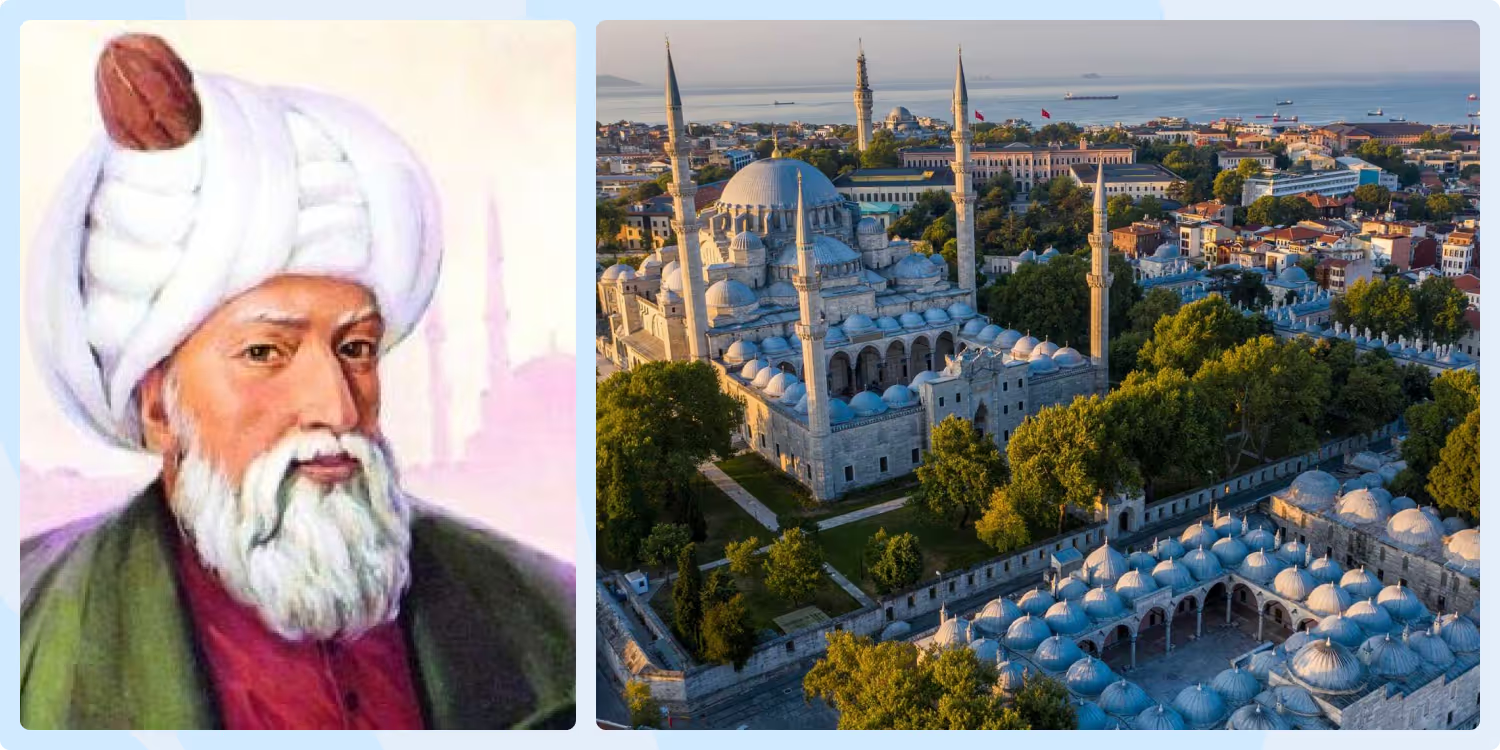
Mimar Sinan is celebrated as the greatest architect of the Ottoman Empire. Serving as chief architect under three sultans, he designed hundreds of structures, blending Islamic and Byzantine influences to create some of the most iconic mosques in history.
- Era and Location: 16th century CE, Ottoman Empire (modern-day Türkiye)
- Most Famous Project(s): Süleymaniye Mosque, Selimiye Mosque
- Notable Innovations: Refined symmetrical mosque dome structures
- Impact on Construction: set new structural and aesthetic standards for mosque architecture
- Legacy: Celebrated as the Ottoman Empire’s greatest architect
Sinan began his career as a military engineer, which gave him a deep understanding of structural stability. Throughout his lifetime, he is credited with designing or overseeing more than 300 buildings, leaving an architectural legacy that continues to shapes the skylines of Istanbul and Edirne.
11. Sir Christopher Wren: Rebuilder of London’s Skyline
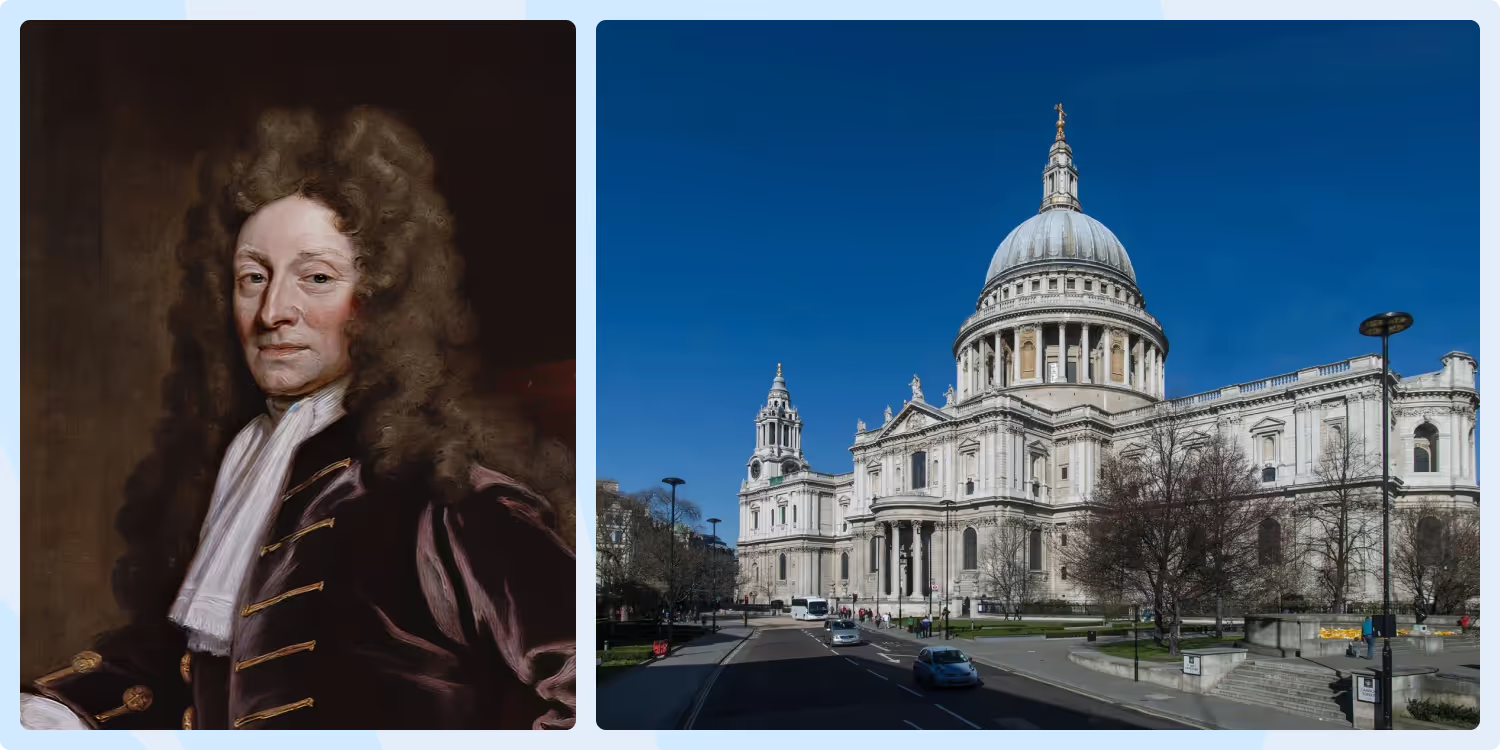
Sir Christopher Wren is remembered as one of England’s greatest architects. After the Great Fire of London in 1666, he led the city’s reconstruction. He designed over 50 churches, including the iconic St. Paul’s Cathedral, which became a symbol of resilience and renewal.
- Era and Location: 17th-18th century CE, London, England
- Most Famous Project(s): St. Paul’s Cathedral
- Notable Innovations: Blended classical and baroque elements in churches
- Impact on Construction: Transformed London’s architectural identity
- Legacy: Revered as the architect who rebuilt London after the Great Fire
Wren was also a gifted mathematician and scientist, contributing to astronomy and physics before fully turning to architecture. His career combined artistic vision with engineering precision, resulting in landmarks that remain central to London’s identity.
12. Thomas Telford: The Colossus of Roads
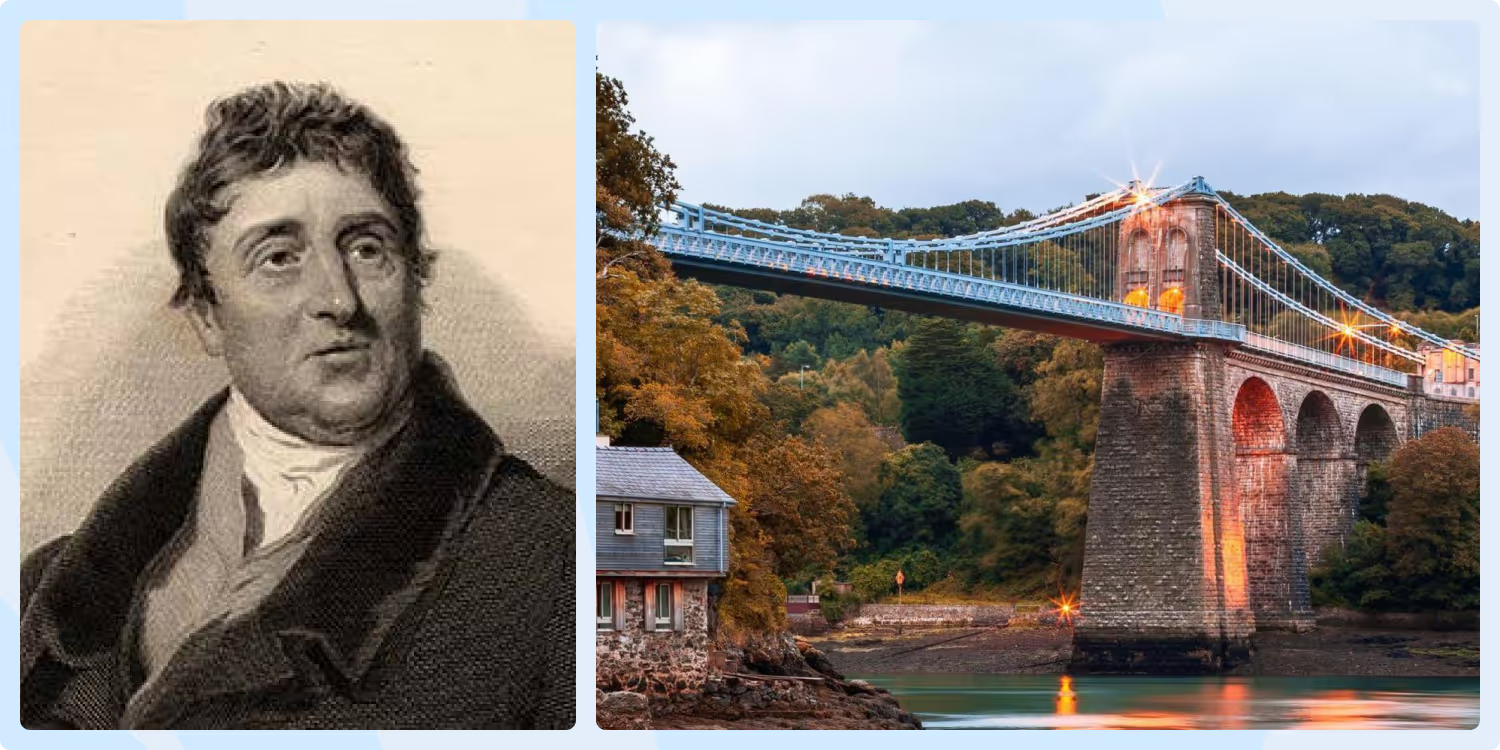
Thomas Telford is celebrated as one of Britain’s greatest civil engineers. Known for his pioneering work in roads, bridges, and canals during the Industrial Revolution, he transformed transportation networks and boosted trade and travel across the country.
- Era and Location: 18th-19th century CE, United Kingdom
- Most Famous Project(s): Menai Suspension Bridge, Caledonian Canal
- Notable Innovations: Pioneered cast iron bridge construction
- Impact on Construction: Expanded and modernized Britain’s canal, road, and bridge network
- Legacy: Nicknamed the “Colossus of Roads” for transformative national infrastructure projects
Telford’s career took him from humble beginnings as a stonemason to becoming the first president of the Institution of Civil Engineers. His projects often pushed the limits of available technology, and many remain in use today.
13. Isambard Kingdom Brunel: Visionary of the Industrial Age
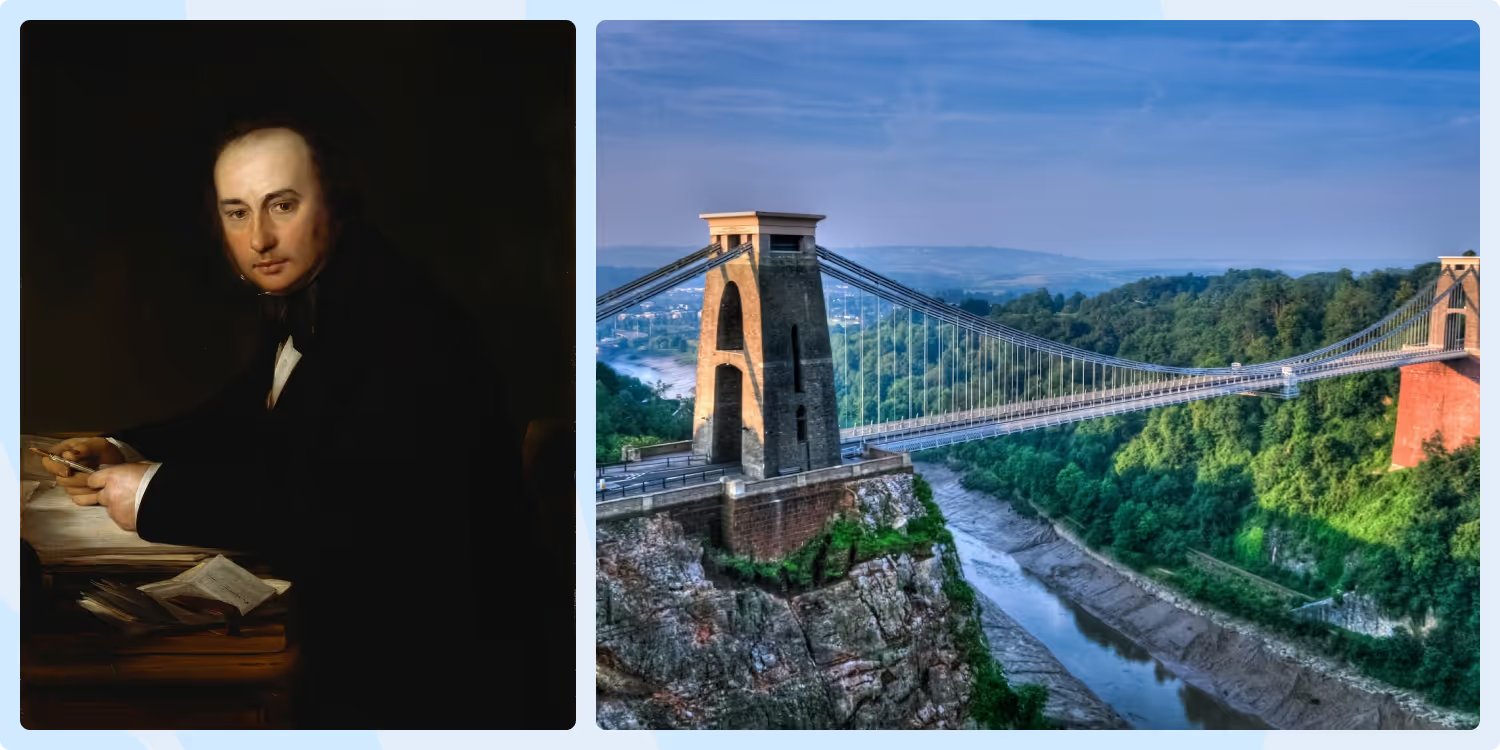
Isambard Kingdom Brunel is remembered as one of the most innovative engineers of the 19th century. He designed groundbreaking railways, bridges, and ships that revolutionized transportation in Britain, shaping the modern industrial world.
- Era and Location: 19th century CE, United Kingdom
- Most Famous Project(s): Great Western Railway, Clifton Suspension Bridge
- Notable Innovations: Designed pioneering steamships, advanced suspension bridges, and broad-gauge railways
- Impact on Construction: Connected regions and boosted trade through integrated transport systems
- Legacy: Icon of Victorian engineering ambition and innovation
Brunel was a great builder known for his relentless work ethic and willingness to take bold risks. Some of his projects faced significant setbacks, yet his determination often led to groundbreaking achievements.
14. Gustave Eiffel: Master of Metal Architecture
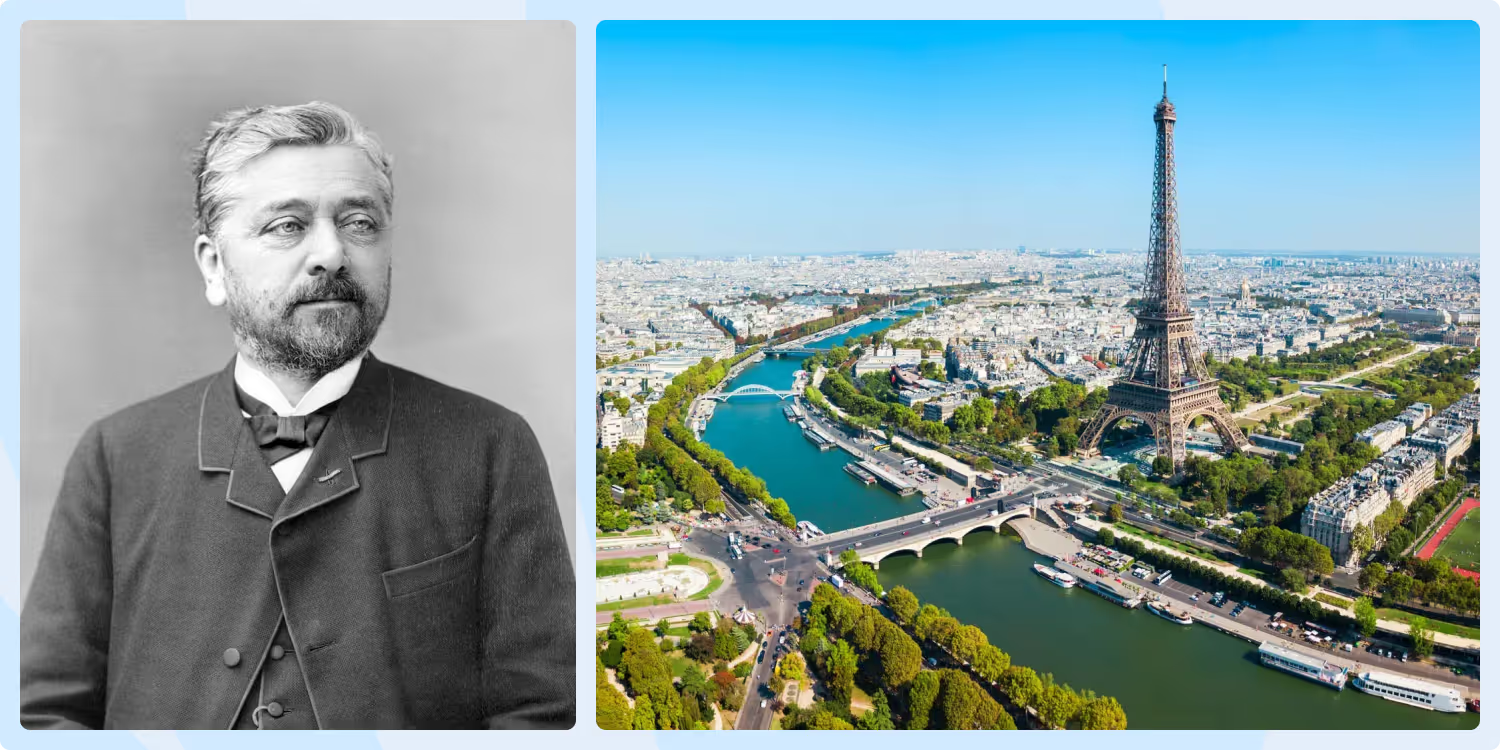
Gustave Eiffel is one of the most famous construction engineers, whose name became synonymous with one of the world’s most famous landmarks. Renowned for his expertise in iron construction, he designed the Eiffel Tower and contributed to the structural framework of the Statue of Liberty.
- Era and Location: 19th-20th century CE, France
- Most Famous Project(s): Eiffel Tower, Statue of Liberty framework
- Notable Innovations: Engineered advanced wrought iron frameworks for towers and bridges
- Impact on Construction: Demonstrated wrought iron’s capacity for large-scale architectural landmarks
- Legacy: Icon of French engineering and global architectural heritage
Eiffel initially faced strong criticism for the tower’s unconventional design, with many calling it an eyesore. Over time, it became a beloved symbol of Paris and a marvel of engineering, securing Eiffel’s place among history’s most influential builders.
15. Fazlur Rahman Khan: Father of Modern Skyscrapers

Fazlur Rahman Khan is hailed as one of the most influential structural engineers of the 20th century. He revolutionized skyscraper design with innovative structural systems that enabled construction of taller, stronger, and more efficient high-rise buildings.
- Era and Location: 20th century CE, United States (born in Bangladesh)
- Most Famous Project(s): Willis Tower, John Hancock Center
- Notable Innovations: Developed framed tube and bundled tube skyscraper systems
- Impact on Construction: Enabled taller, stronger, and more efficient high-rise designs
- Legacy: Pioneered structural engineering concepts that shaped modern skylines
Khan combined engineering expertise with an architect’s sense of form, creating buildings that were both functional and elegant. His human-centered approach to design earned him admiration from peers, and many of his innovations remain standard practice in skyscraper construction today.
Timeless Lessons from Famous Builders for Modern Projects
These famous builders in this list turned ambition into achievements that shaped history. Their breakthroughs in design, engineering, and project execution still influence how we build today.
They prove that great construction isn’t just about materials - it’s about vision, skill, and the courage to innovate. Those same qualities continue to drive the construction industry forward, creating landmarks that will inspire the future generation.











